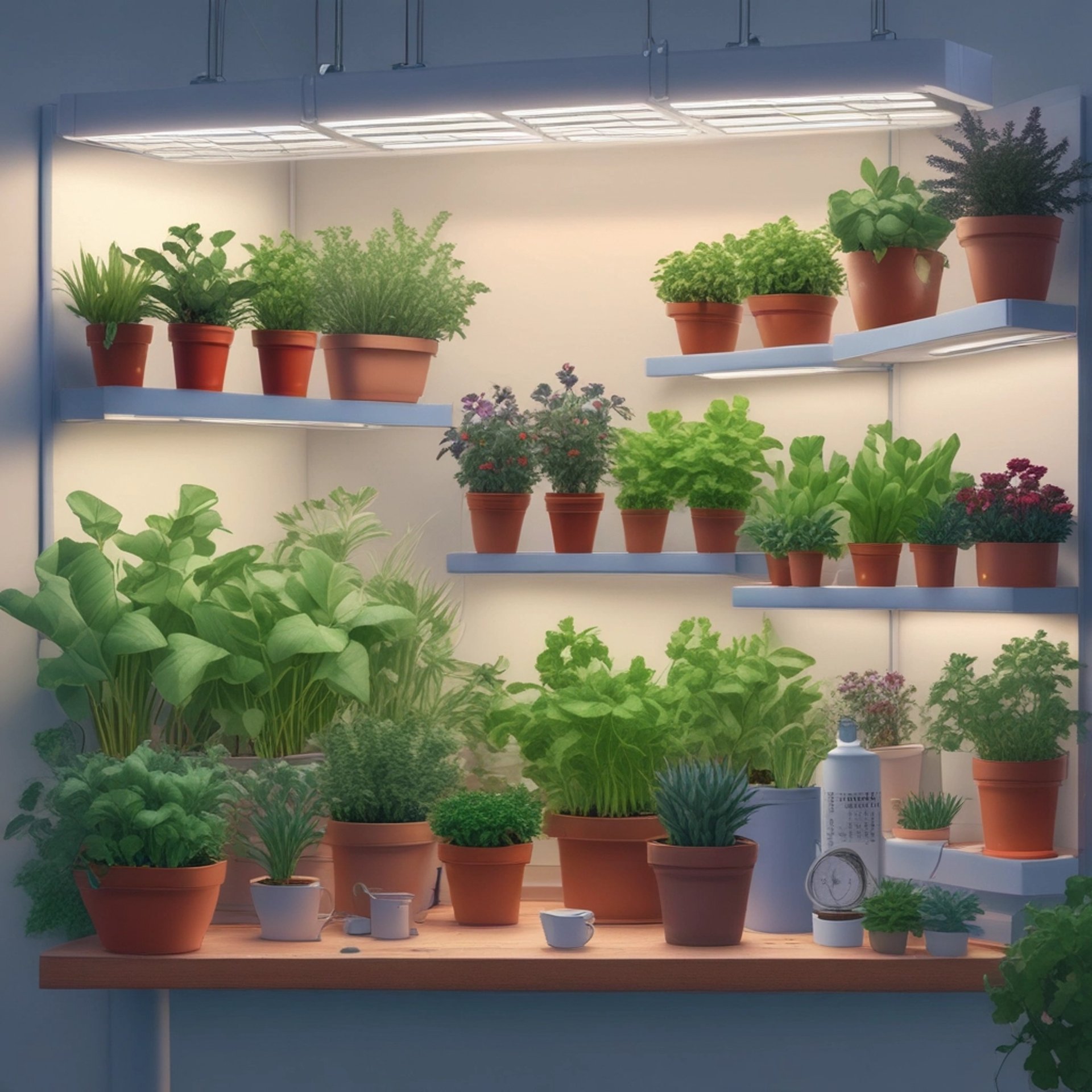🌿 GROWPlantWell – Nurture Nature, Transform Your Space 🌿

💡 Grow Lights for Plants: A Bright Solution for Indoor Gardening
Learn how grow lights help plants thrive indoors. Learn about types of grow lights, how they work, and how to choose the right light for your plants.
Khurram Shehzad
8/7/20252 min read


🌱 Why Use Grow Lights?
Sunlight is essential for plant growth — but what if you don’t have enough of it? Whether you're growing herbs in your kitchen or managing a commercial greenhouse, grow lights can provide the light spectrum plants need to photosynthesize, grow, and bloom.
Grow lights replicate the sun’s energy, making it possible to grow healthy plants indoors or in low-light conditions year-round.
💡 What Are Grow Lights?
Grow lights are artificial light sources designed to support plant growth by providing the wavelengths of light plants use for photosynthesis — primarily blue and red light.
They’re used for:
Indoor gardening
Hydroponics and aquaponics
Starting seeds
Overwintering sensitive plants
Commercial vertical farms
🔍 How Do Grow Lights Work?
Plants absorb light in different parts of the spectrum:
Blue light (400–500 nm) promotes leaf growth and is crucial for seedlings and vegetative stages.
Red light (600–700 nm) encourages flowering and fruiting.
Full-spectrum lights combine various wavelengths to mimic natural sunlight.
By choosing the right grow light, you control the photoperiod and light intensity — giving your plants the best conditions to thrive, even without natural sun.
💡 Types of Grow Lights
Here's a quick breakdown of the most common types:
1. LED Grow Lights
Energy-efficient, long-lasting
Cool to the touch
Available in full-spectrum options
Great for all stages of growth
2. Fluorescent Lights (CFL or T5)
Good for seedlings and leafy greens
Affordable and easy to use
Lower intensity — best for small-scale use
3. High-Intensity Discharge (HID)
Includes Metal Halide (MH) and High-Pressure Sodium (HPS) lights
Powerful and effective for large grow spaces
Emit heat — require ventilation
4. Halogen or Incandescent
Least efficient and outdated
Not recommended for serious plant growth
🌿 How to Choose the Right Grow Light
When selecting a grow light, consider:
Plant type (vegetables, herbs, flowering plants)
Growth stage (seedling, vegetative, flowering)
Growing area size
Light duration needs (photoperiod)
Budget and energy efficiency
📝 Tip: Most leafy greens and herbs thrive under cool white or full-spectrum LEDs, while flowering plants benefit from added red light.
🕒 How Long Should Grow Lights Be On?
Leafy Greens: 12–14 hours of light per day
Flowering Plants: 14–16 hours of light per day
Seedlings: Up to 16 hours of light per day
Use timers to maintain consistent light cycles
Mimic natural day/night rhythms to avoid stressing plants
Adjust duration based on specific plant species and growth stage
🌼 Benefits of Using Grow Lights
✅ Grow plants year-round
✅ Control plant growth and flowering
✅ Extend daylight in winter
✅ Start seeds early
✅ Grow indoors in any space
❓Frequently Asked Questions
Q1: Can any LED light work as a grow light?
Not all LEDs emit the full spectrum plants need. Use LEDs labeled as "grow lights" for best results.
Q2: How close should grow lights be to plants?
Distance depends on light type. LEDs: 12–24 inches. Fluorescent: 6–12 inches. Always follow the manufacturer’s guidance.
Q3: Do grow lights increase your electricity bill?
Modern LED grow lights are energy-efficient and have minimal impact on your power usage.
🌿
Grow lights bring the power of the sun indoors, giving you the freedom to grow fresh herbs, leafy greens, or flowering plants all year round. Whether you're a home gardener or a commercial grower, the right light can make all the difference in plant health and yield.
With advances in technology and full-spectrum options now widely available, it's easier than ever to create a thriving indoor garden — no sunlight required.